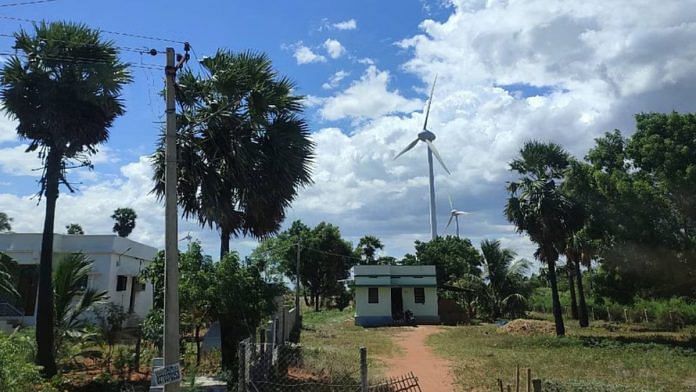New Delhi: With significant improvement in key parameters of energy equity & security, and environmental sustainability, India jumped 20 places to the 67th position among 120 countries in the ‘Energy Transition Index’ (ETI), according to a report released by the World Economic Forum Wednesday. ETI benchmarks the countries on the performance of their energy systems, and also their readiness to secure sustainable energy systems.
In 2021, India was at the 87th position among 115 countries. India and Singapore (70th) are the only major economies showing transition momentum by advancing sustainability, energy security and equity in a balanced way, according to the report titled ‘Fostering Effective Energy Transition 2023’. Along with China and Indonesia, India is among the 55 countries that have improved their ETI score by more than 10 percentage points over a decade.
Sweden once again topped the ETI followed by Denmark and Norway. These countries have been in the top three for the past decade.
In its report, the WEF said that while there has been broad progress on clean, sustainable energy, there are emerging challenges to the equity of transition due to countries shifting their focus to energy security.
“This speed of transition is not sufficient to meet the Paris Agreement targets in an inclusive and secure way. The geopolitical and macroeconomic volatilities that prompted the recent global energy crisis shifted countries’ focus to maintaining secure and stable energy supply at the expense of universal affordability and challenged progress observed in the past decade,” WEF said in a statement.
The Paris Agreement, signed 2015 to beat climate change, aims to keep the global temperature rise this century below 2 degrees Celsius, and to further limit the increase to 1.5 degrees Celsius.
This time, the ETI was based on an updated framework reflecting emerging shifts in the global energy landscape to benchmark 120 countries in two areas: the performance of their energy systems in the dimensions of equity, energy security and environmental sustainability, and the readiness of the enabling environment for energy transition. The ‘transition momentum’ was evaluated for the first time.
Also read: Mahindra, Godrej, Jindal—Meet India’s growing climate philanthropists
‘Sustainability profile due to bigger share of renewable energy’
While India’s? share of clean energy is low in the final demand and the energy mix is largely carbon intensive, the sustainability profile has improved due to increasing share of renewable energy. “Improvements in the enabling environment have been driven by political commitment, an ambitious reform agenda, infrastructure investments and a competitive renewable energy landscape,” the report said.
The improvement in India’s ranking is significant, given that energy transition has been challenged by near-term exigencies and countries try to emerge from various health, geopolitical and economic crises.
“Achieving universal access to electricity, replacing solid fuels with clean cooking options (primarily liquified petroleum gas) and increasing renewable energy deployment have been primary contributors to the improvement of India’s ETI performance,” the report said, adding, “India also emerged relatively less affected from the recent energy crisis, largely due to the low share of natural gas in power generation and increased use of existing generation capacities.”
At COP26, India committed to achieving net-zero emission by 2070. There are several key initiatives and policy decisions taken for energy efficiency and decarbonisation of key demand sectors, said the report.
It said that decarbonisation of power generation and electrification of final demand are key levers of India’s energy transition. “The pace of thermal power plant expansion has considerably slowed, though strategies for early retirement or repurposing of the existing fleet will be crucial,” it said.
To enable India’s energy transition, a skilled workforce, public-private collaboration in innovation, and investment in research and development in low-carbon technologies are necessary, said the report.
“Despite continued economic growth, India has successfully reduced the energy intensity of its economy and the carbon intensity of its energy mix, while achieving universal energy access and effectively managing affordability of electricity,” the statement read.
Challenging scenario for energy transition
According to the WEF, the ETI has plateaued in the past three years and the speed of transition is not sufficient to meet the Paris Agreement targets in an inclusive and secure way. The focus of countries has shifted to maintaining stable and secure energy supply due to the geopolitical and macroeconomic volatilities.
ETI scores declined for approximately 50 per cent of the countries in the past year, which disproportionately impacted vulnerable consumers, small businesses and developing economies, the report said.
“The recent turbulence in energy markets has exposed how interconnected energy prices are with macroeconomic and social stability. This can, and has, put developing countries at risk of losing their momentum gained before the energy crisis on access to affordable, sustainable energy,” said Roberto Bocca, Head of Energy, Materials and Infrastructure, WEF, in the statement.
“It further demonstrates the importance of balancing improvements in energy security, sustainability and equity — at the same time — to enable an effective energy transition,” Bocca said.
The US (12), Australia (24) and Estonia (10) scored the highest in energy security which measures the resilience and reliability of supply.
The report shows that many countries that account for over 90 per cent of the global emissions are prioritising sustainability, focusing on policies and programmes that promote energy conservation, renewable technologies and innovation in energy storage and grid modernisation.
Brazil (14) and China (17) are among the top 20 countries due to abundant hydroelectricity capacity and leadership in biofuels. Brazil scored high on energy security and environmental sustainability, accounting for 7 per cent of renewable energy production worldwide.
China leads on renewable energy investments and capacity development, supported by mature domestic supply chains, and in the incubation of industries such as electric vehicles and energy storage.
(Edited by Smriti Sinha)
Also read: CEEW to iFOREST, Modi govt listens when think tanks talk. They are growing in clout & cash



